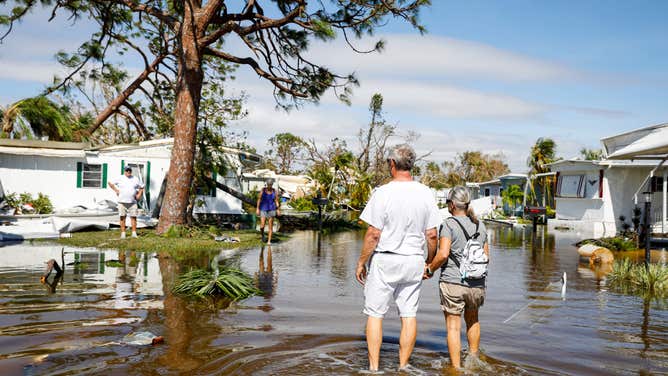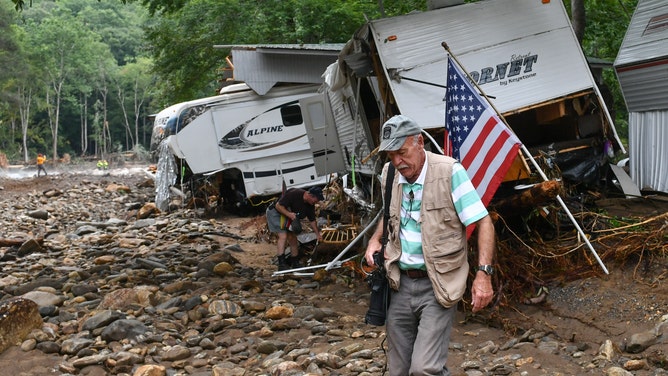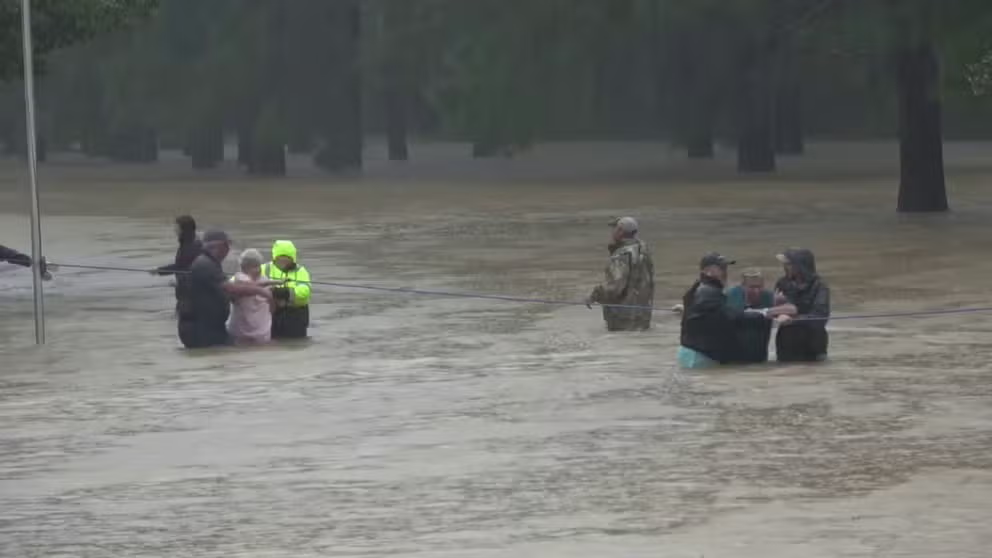Why older adults are disproportionately affected by hurricanes and other natural disasters
The U.S. Census Bureau projects that adults aged 65 and older will outnumber Americans under the age of 18 by 2034. This demographic divide will be a first in U.S. history.
Hurricane preparedness: What you should now ahead of hurricane season
Mark Friedlander, Director of Corporate Communications for Insurance Information Institute, discusses what homeowners, business owners and property owners should know ahead of hurricane season.
In Florida, many of the deaths attributed to Hurricane Ian have been older Americans.
This phenomenon of weather-related fatalities skewing toward older adults, however, is not isolated to hurricanes or the Sunshine State.
"Adults aged 65 and older are a growing demographic who are often disproportionately impacted by severe weather," said Deanne Criswell, administrator of the Federal Emergency Management Agency.

People walk on a flooded street at a trailer park following Hurricane Ian in Fort Myers, Florida, US, on Thursday, Sept. 29, 2022.
(Eva Marie Uzcategui / Bloomberg / Getty Images)
For example, three out of four deaths during Hurricane Katrina in 2005 were adults aged 60 years or older. Also, two out of three deaths during Hurricane Florence in 2018 were adults aged 60 or older, with nearly half being 70 years or older.
Age and a number of other factors drive this disparity.
One factor is accessibility. According to FEMA, many older adults might not be able to drive nor have access to reliable public transportation. They might also depend on home-based medical equipment with special requirements, which can make evacuations challenging.
Nursing home residents evacuated as floodwaters rise in Brandon, MS
Residents at Village Nursing Home had to be evacuated as floodwaters rose in Brandon, Mississippi on Wednesday.
Another factor is that many older adults serve as caregivers to their spouses or partners, who might be experiencing their own medical vulnerabilities. According to FEMA, this can make evacuations and other safety measures and preparations difficult.
Finances may also pose a challenge for older adults leading up to natural disasters. FEMA said many older adults may not have the financial means necessary to temporarily relocate.

An elderly passes by trailers damaged by heavy rainfall caused by tropical depression Fred in August 2021.
(Peter Zay / Anadolu Agency / Getty Images)
While many older adults might live in nursing homes or assisted living facilities and are able to receive some help during natural disasters, the majority of older adults live woven into their communities and in many cases, they live alone.
"State and local leaders and emergency officials must be better equipped and prepared to ensure that older adults are kept safe, and their needs are met when a disaster strikes," said Nancy LeaMond, executive vice president and chief advocacy and engagement officer at AARP.
Arkansas nursing home still recovering following December tornadoes
Workers still clearing the site of where Monette Manor once stood. Deadly tornadoes devastated the nursing home on December 10, 2021.
According to U.S. Census Bureau projections, adults aged 65 and older will outnumber Americans under the age of 18 by 2034. This demographic divide will be a first in U.S. history.


